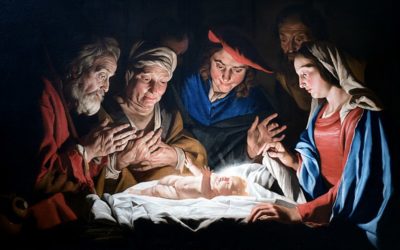The texts that make up sections 133 and 134 of the Doctrine and Covenants are long and important ones, discussing topics of great relevance today: the end of the world, and the role of governments and religious freedom.
Doctrine and Covenants 133
Although the sections in the Doctrine and Covenants are presented in roughly chronological order, there are exceptions, one of which is the revelation published as section 133. In the published volume, it follows revelations given in 1843, but it is dated almost a dozen years earlier in 1831. That is because this revelation was initially designated as the appendix for the Book of Commandments, which a Church conference in November 1831 resolved to publish.
For further historical background on this section, click here.
The revelation is a warning to flee spiritual Babylon for the land of Zion and her stakes to prepare for the Lord’s Second Coming. Elders of the Church are to call on those of all nations, warning them to repent and gather in. They are to gather in an orderly way, not in haste, but with the way prepared ahead of them. (Verses 1‒19.)
The Savior will eventually come, stand on the Mount of Olives, and speak to the world. His voice will be heard throughout the earth. The earth will be transformed, and the Lord will reign among his own people over all. Scattered Israel will be gathered in, blessed, and sanctified (Verses 20‒35.)
To prepare for this, Christ’s gospel was restored to the earth (verses 36‒39).
When the Lord comes again, His presence “shall be as the melting fire that burneth, and as the fire which causeth the waters to boil” (verse 41). Mountain shall “flow down” (verses 40, 44). The Savior will make His name known, causing all nations to tremble (verse 42).
The righteous will rejoice and be greatly blessed (verses 44‒45, 52‒53). But the wicked shall tremble (42‒43).
People will ask, “Who is this that cometh down from God in heaven with dyed garments; yea, from the regions which are not known, clothed in his glorious apparel, traveling in the greatness of his strength?” (verse 46).
He will answer, “I am he who spake in righteousness, mighty to save” (verse 47).
“And the Lord shall be red in his apparel, and his garments like him that treadeth in the wine-vat. And so great shall be the glory of his presence that the sun shall hide his face in shame, and the moon shall withhold its light, and the stars shall be hurled from their places. And his voice shall be heard: I have trodden the wine-press alone, and have brought judgment upon all people; and none were with me; and I have trampled them in my fury, and I did tread upon them in mine anger, and their blood have I sprinkled upon my garments, and stained all my raiment; for this was the day of vengeance which was in my heart.” (Verses 48‒51.)
Joining the Lord at His coming will be “Enoch also, and they who were with him; the prophets who were before him; and Noah also, and they who were before him; and Moses also, and they who were before him; and from Moses to Elijah, and from Elijah to John, who were with Christ in his resurrection, and the holy apostles, with Abraham, Isaac, and Jacob” (verses 53‒55).
“And the graves of the saints shall be opened; and they shall come forth and stand on the right hand of the Lamb, when he shall stand upon Mount Zion, and upon the holy city, the New Jerusalem; and they shall sing the song of the Lamb, day and night forever and ever” (verse 56).
To prepare for this day, the gospel was restored, missionaries called, and the revelations in the Book of Commandments (now the Doctrine and Covenants) were given (verses 57‒61).
Whosoever “repenteth and sanctifieth himself before the Lord shall be given eternal life” (verse 61), with the disobedient being sent “away into outer darkness, where there is weeping, and wailing, and gnashing of teeth” (verses 63‒73). For “the Lord your God hath spoken it” (verse 74).
Doctrine and Covenants 134
Published originally in 1835 under the title “Of Governments and Laws in General,” the statement that is now section 134 of the Doctrine and Covenants was presented by Oliver Cowdery and Sidney Rigdon on August 17, 1835, to a Church general assembly while Joseph Smith was traveling in Michigan Territory. Though Joseph was not present at the time, he later endorsed the statement and its inclusion in the Doctrine and Covenants.
For further historical background on this section, click here.
The statement declares “that governments were instituted of God for the benefit of man; and that he holds men accountable for their acts in relation to them” (verse 1), and that governments are to “secure to each individual the free exercise of conscience, the right and control of property, and the protection of life” (verse 2). It encourages righteous government leadership (verses 3‒4, 7) and citizen support of good government (verses 5‒6). It encourages wise law enforcement (verse 8) and opposes the establishment of a state religion (verse 9).
It declares that religious societies can determine whether members are in good standing but cannot deprive them of life, limb, or property (verse 10). It recognizes the principle of self-defense in cases where law enforcement is not available immediately (verse 11) and declares the importance of missionary work (verse 12). Verse 12 also deals with slavery, probably in response to the attacks on Church members in Missouri.
Credit for image at top of page: Stock image from depositphotos.com.



